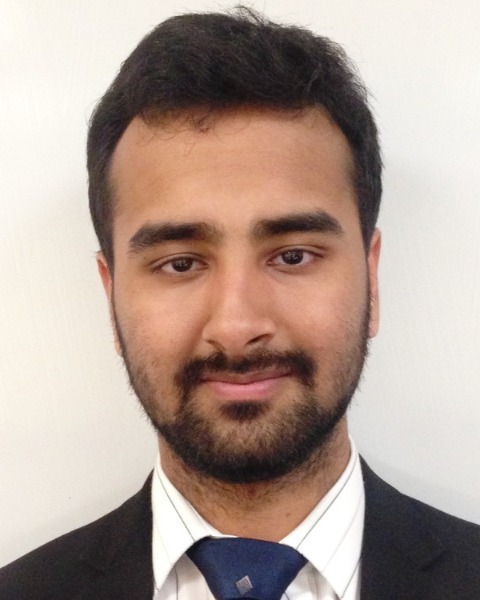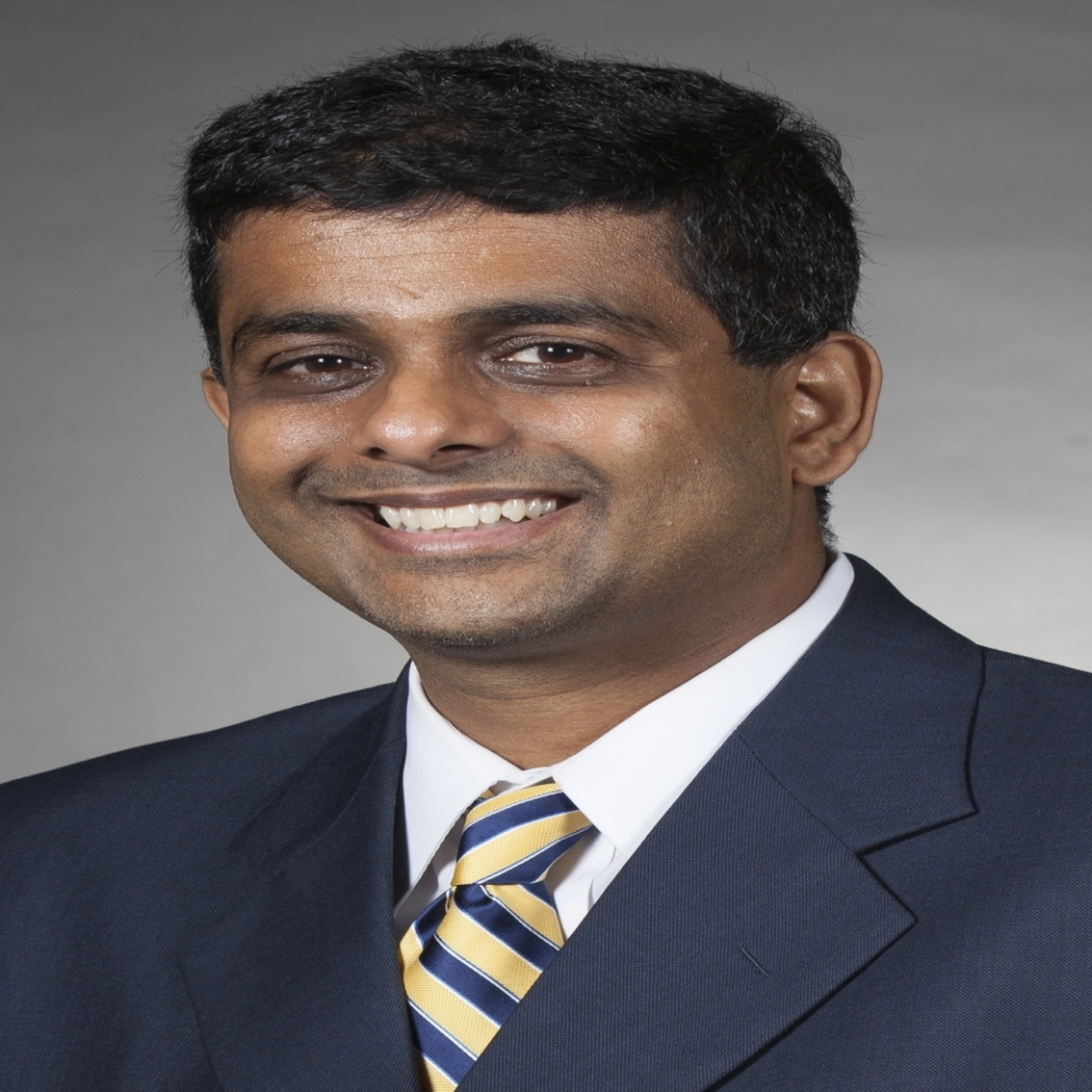Biomechanics
(F-212) Computational Reproduction of the Aortic Valve Geometry for Patient-Specific Simulations
Friday, October 13, 2023
3:30 PM - 4:30 PM PDT
Location: Exhibit Hall - Row F - Poster # 212

Asad Mirza (he/him/his)
PhD Candidate
Florida International University
Miami, Florida, United States
Sharan Ramaswamy, PhD
ASSOCIATE PROFFESSOR
FLORIDA INTERNATIONAL UNIVERSITY, United States
Presenting Author(s)
Primary Investigator(s)
Introduction:: Calcified aortic valve disease (CAVD) is a common debilitating cardiovascular condition, affecting millions of people worldwide. It is characterized by the buildup of calcium deposits in the aortic valve, leading to narrowing and obstruction of blood flow. Computational models for CAVD are valuable tools for understanding disease progression, predicting patient outcomes, and guiding treatment decisions. However, creating accurate computational models requires access to detailed patient-specific data on valve and sinus geometry, which can be time-consuming and costly to obtain. Traditionally, medical imaging techniques such as computed tomography (CT) and magnetic resonance imaging (MRI) have been used to acquire this geometry. However, these imaging modalities would only be used once a patient shows symptoms of CAVD, such as fatigue, chest pains, and shortness of breath. This makes it difficult for researchers to access the geometry of patients who would develop CAVD before said symptoms appear. To overcome these challenges, we have developed an adaptable parameterized computer-aided design (CAD) model of the aortic valve that mimics a real patient's valve using only short and long axis views from a routine echocardiograph, a non-invasive imaging technique that is widely available and relatively inexpensive. This model can serve as a starting point for creating a computational CAVD model that would model the geometry of the disease from its earliest stages.
Materials and Methods:: The parameterized CAD model is designed to be flexible, allowing for adjustments to be made to the valve geometry based on individual patient characteristics. To accurately model the geometry of the aortic heart valve, an equation-based dimensioned approach was implemented in SolidWorks. The model incorporated several key features of the valve anatomy, including sinus height (hSinus), the rotational and axial shapes of each cusp modeled as quadratic B-splines with cusp-specific radii and angles (rSinusx/θSinusx), and a radius for each leaflet (rLeafletx). Additionally, several important parameters were included in the model to determine the resting state configuration of the leaflets, including interleaflet distance (αGap), coaptation height (hCoap), and commissure height (hCom). The aortic annulus, center of the valve, and the sinotubular junction (STJ) were assumed to be circular with predetermined radii (rAA, rValve, and rSTJ, respectively), and were separated by the sinus's height (hSinus). The geometric profiles of all these features were lofted together, with normal constraints applied at interfaces to ensure smooth transitions. In addition, the coronary ostiums were modeled as circular cuts on the aorta, located at hCoap with a given radius (rOstium).
Results, Conclusions, and Discussions:: The parameterized aortic heart valve model can create valves of various patient sizes, 20 – 30 mm, asymmetric leaflet shapes, and angles. The model can also be adjusted to mimic other valve pathologies such as bicuspid and rheumatic disease with leaflet fusion.
Aortic heart valve geometries that mimic the morphology found in patients were successfully reproduced computationally in this study and validated with patient specific valve echocardiographic images. The next step would be to assess the fluid and solid mechanical properties of these computationally reproduced heart valves, to identify any correlations with early stage valve disease.
These models will serve as a general purpose, “healthy” geometry creator that will subsequently be paired with a CAVD generation model that will add varying levels of calcified deposits to the geometry to mimic the progression of CAVD from mild to severe. From here we will conduct multiple 2-way fluid-structure interaction simulations to elucidate any relationship between hemo/hydrodynamics of the various generated valves that could be indicative of possible predictive features of CAVD solid mechanical properties, that wouldn’t be noticed in routine checkup through CT, MRI, or Echo.
Acknowledgements (Optional): : The authors would like to thank the Koerner Family Foundation.
References (Optional): :
Materials and Methods:: The parameterized CAD model is designed to be flexible, allowing for adjustments to be made to the valve geometry based on individual patient characteristics. To accurately model the geometry of the aortic heart valve, an equation-based dimensioned approach was implemented in SolidWorks. The model incorporated several key features of the valve anatomy, including sinus height (hSinus), the rotational and axial shapes of each cusp modeled as quadratic B-splines with cusp-specific radii and angles (rSinusx/θSinusx), and a radius for each leaflet (rLeafletx). Additionally, several important parameters were included in the model to determine the resting state configuration of the leaflets, including interleaflet distance (αGap), coaptation height (hCoap), and commissure height (hCom). The aortic annulus, center of the valve, and the sinotubular junction (STJ) were assumed to be circular with predetermined radii (rAA, rValve, and rSTJ, respectively), and were separated by the sinus's height (hSinus). The geometric profiles of all these features were lofted together, with normal constraints applied at interfaces to ensure smooth transitions. In addition, the coronary ostiums were modeled as circular cuts on the aorta, located at hCoap with a given radius (rOstium).
Results, Conclusions, and Discussions:: The parameterized aortic heart valve model can create valves of various patient sizes, 20 – 30 mm, asymmetric leaflet shapes, and angles. The model can also be adjusted to mimic other valve pathologies such as bicuspid and rheumatic disease with leaflet fusion.
Aortic heart valve geometries that mimic the morphology found in patients were successfully reproduced computationally in this study and validated with patient specific valve echocardiographic images. The next step would be to assess the fluid and solid mechanical properties of these computationally reproduced heart valves, to identify any correlations with early stage valve disease.
These models will serve as a general purpose, “healthy” geometry creator that will subsequently be paired with a CAVD generation model that will add varying levels of calcified deposits to the geometry to mimic the progression of CAVD from mild to severe. From here we will conduct multiple 2-way fluid-structure interaction simulations to elucidate any relationship between hemo/hydrodynamics of the various generated valves that could be indicative of possible predictive features of CAVD solid mechanical properties, that wouldn’t be noticed in routine checkup through CT, MRI, or Echo.
Acknowledgements (Optional): : The authors would like to thank the Koerner Family Foundation.
References (Optional): :
- Lau, Gary & Hebballi, Ravi. (2012). Transoesophageal Echocardiographic Evaluation of the Mitral Valve. International Journal of Perioperative Ultrasound and Applied Technologies. 1. 89-93. 10.5005/jp-journals-10027-1018.
- Abeln, K.B., Giebels, C., Ehrlich, T. et al. Which Aortic Valve Can Be Surgically Reconstructed?. Curr Cardiol Rep 23, 108 (2021). https://doi.org/10.1007/s11886-021-01525-z
